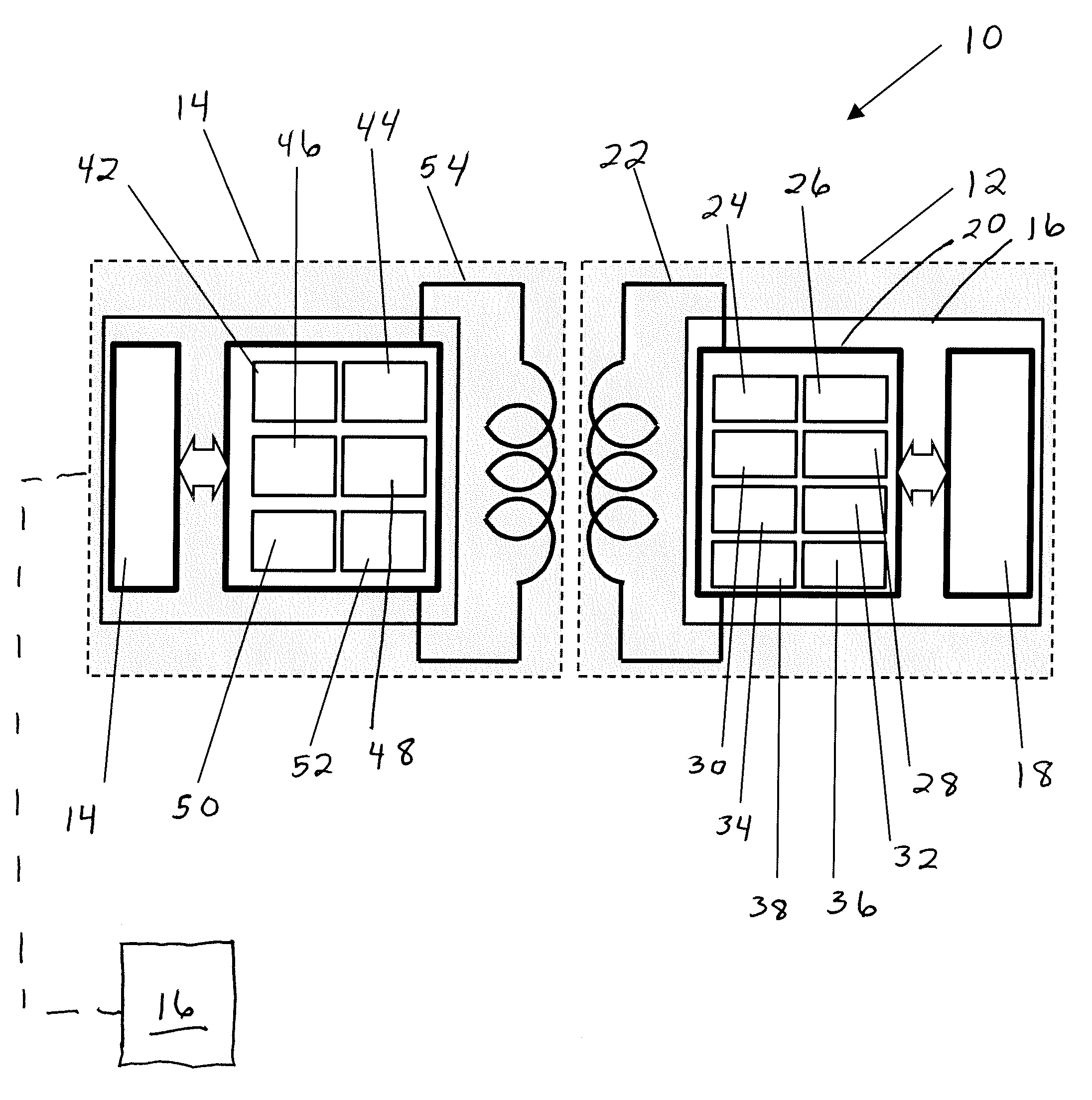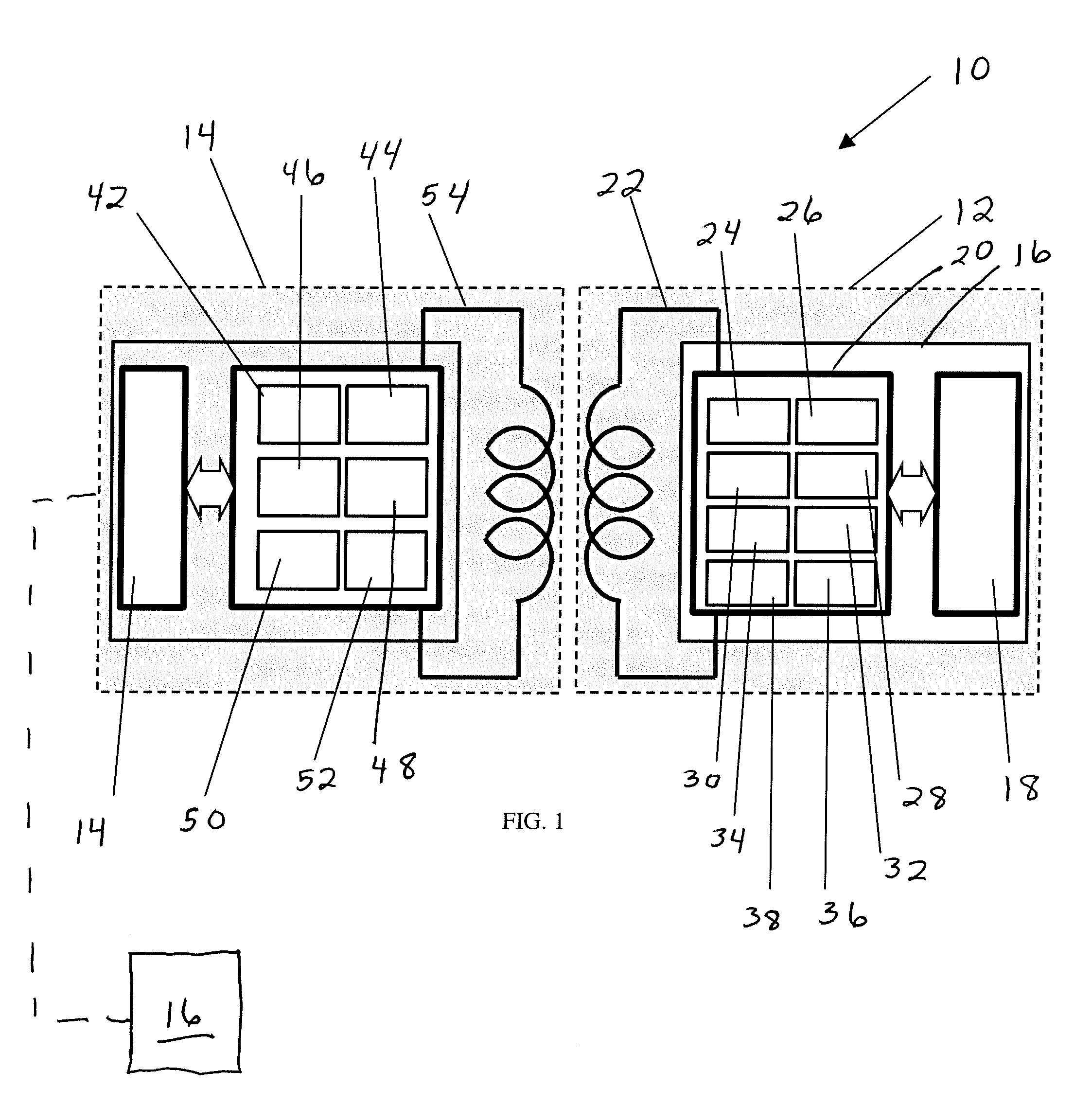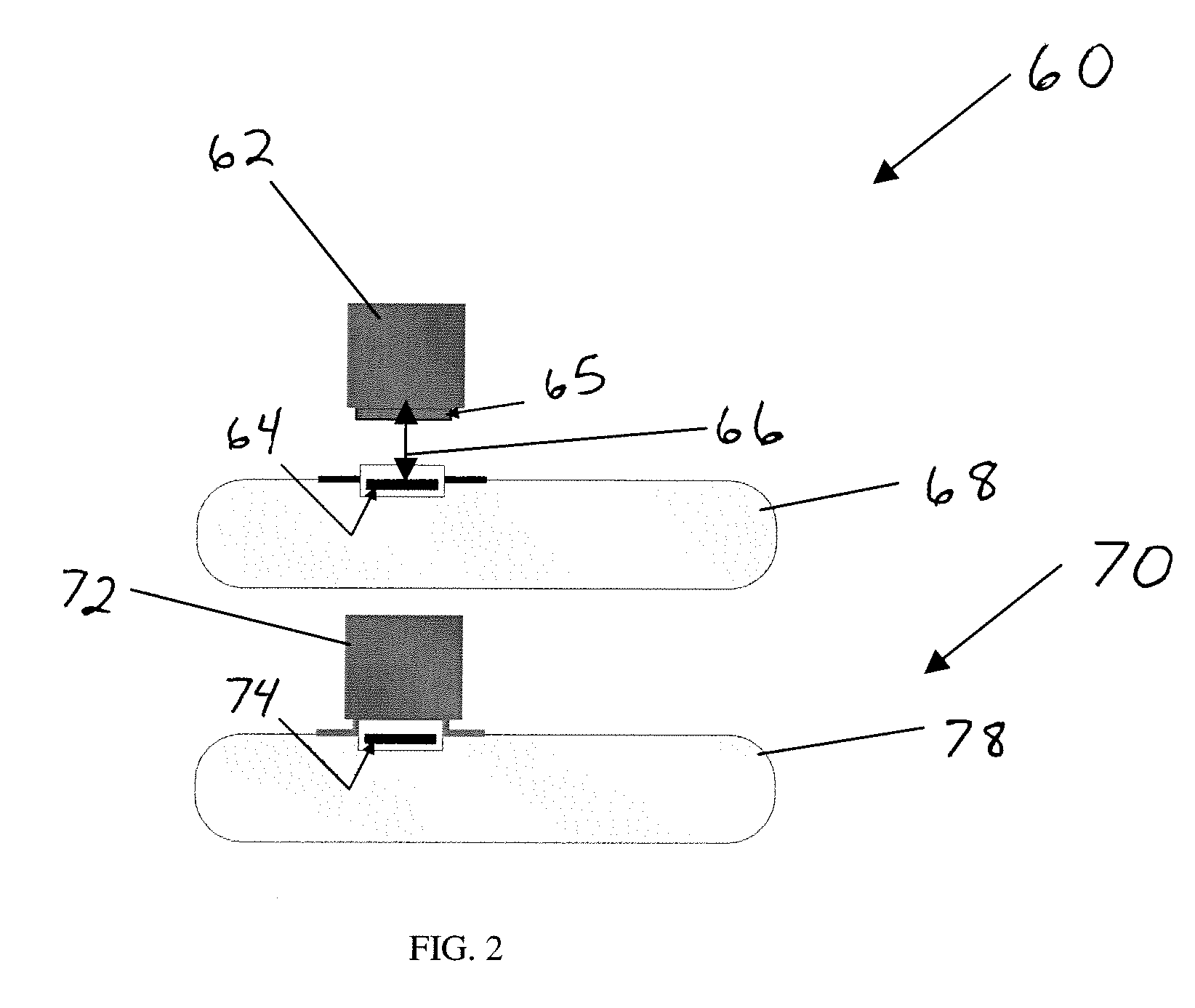RFID based methods and systems for use in manufacturing and monitoring applications
a technology of rfid and monitoring application, which is applied in the direction of wireless architecture usage, telemetry/telecontrol selection arrangements, instruments, etc., can solve the problems of inability to calibrate the sensors and verify the information written and stored on the memory chips of the rfid device, inability to store digital information, and conventional rfid devices are not resistant to change, so as to achieve the effect of reducing auto-redundancy
- Summary
- Abstract
- Description
- Claims
- Application Information
AI Technical Summary
Benefits of technology
Problems solved by technology
Method used
Image
Examples
example 1
[0046]The total available 2000 bytes memory of memory chips was divided into three sectors such as a sector A for article ID, serial number, and possible sensor calibrations, sector B for authentication, and sector C with user available blocks. Redundant data was written into two sectors (A and B). The sectors A, B, and C were unencrypted data, encrypted data, and empty (no data), respectively. The respective page redundancy was 11, 9, and 5, thus we had 25 pages (11+9+5=25) of 80 bytes per page. The goal was to write redundant data, gamma irradiate the tags, read the data back, and count the number of pages that were correct after the irradiation. An algorithm compared the content of each page and highlighted the page that had a content that did not match with the majority of similar pages.
[0047]One of pages A was corrupted after gamma irradiation (35 kGy) in one tag out of 13 tags. However, because the majority of similar pages had identical data, the overall data was correctly id...
example 2
[0048]As another example, the improvement of reliability of writing and reading data onto RFID tags after their gamma irradiation was demonstrated. Before irradiation the read range of the tested RFID tags with memory chips based on CMOS circuitry and ferroelectric memory was from 10 to 50 mm from the reader. Immediately after irradiation with 35 kGy of gamma rays, the read range became very narrow, 20-21 mm from the reader. The read range became 12-30 mm after 2 weeks after gamma irradiation. The read range found after irradiation did not reach the initial read range after months after the irradiation. To read reliably the RFID tags after gamma irradiation the power level of the employed RFID reader was altered from its minimum to its maximum and the tag response was determined. To read reliably the RFID tags after gamma irradiation, the distance between the employed RFID reader and the RFID tag was altered from its minimum to its maximum distance before the tag gamma irradiation a...
example 3
[0049]The release of additional memory blocks for the end-user after the gamma irradiation was demonstrated after the redundancy of written data was implemented. RFID tags 102 with ferroelectric memory and with redundant data were used as described in Example 1. After the irradiation, the data was read from the memory of ferroelectric memory chips. The correct data was established from the at least three identical pages. Thus, the rest of the pages were released for the end user.
PUM
 Login to View More
Login to View More Abstract
Description
Claims
Application Information
 Login to View More
Login to View More - R&D
- Intellectual Property
- Life Sciences
- Materials
- Tech Scout
- Unparalleled Data Quality
- Higher Quality Content
- 60% Fewer Hallucinations
Browse by: Latest US Patents, China's latest patents, Technical Efficacy Thesaurus, Application Domain, Technology Topic, Popular Technical Reports.
© 2025 PatSnap. All rights reserved.Legal|Privacy policy|Modern Slavery Act Transparency Statement|Sitemap|About US| Contact US: help@patsnap.com



